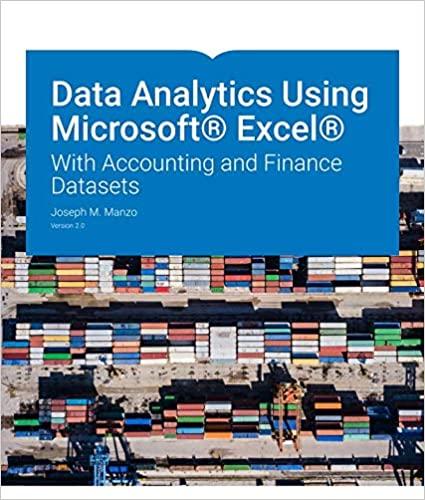Question
Wildhorse Limited purchased delivery equipment on March 1, 2016, for $138,750 cash. At that time, the equipment was estimated to have a useful life of
Wildhorse Limited purchased delivery equipment on March 1, 2016, for $138,750 cash. At that time, the equipment was estimated to have a useful life of five years and a residual value of $10,470. The equipment was disposed of on November 30, 2018. Wildhorse uses the diminishing-balance method at one times the straight-line depreciation rate, has an August 31 year end, and makes adjusting entries annually.
Just need the ones that are wrong, please.



Sandhill Co. purchased equipment on March 27, 2018, at a cost of $300,000. Management is contemplating the merits of using the diminishing-balance or units-of-production method of depreciation instead of the straight-line method, which it currently uses for other equipment. The new equipment has an estimated residual value of $4,000 and an estimated useful life of either four years or 80,000 units. Demand for the products produced by the equipment is sporadic so the equipment will be used more in some years than in others. Assume the equipment produces the following number of units each year: 14,000 units in 2018; 20,600 units in 2019; 20,400 units in 2020; 20,000 units in 2021; and 5,000 units in 2022. Sandhill has a December year end.



Your answer is partially correct. Try again. Record depreciation at August 31, 2016, 2017, and 2018. (Credit account titles are automatically indented when the amount is entered. Do not indent manually. If no entry is required, select "No Entry" for the account titles and enter o for the amounts. Round answers to 0 decimal places, e.g. 5,275.) Date Account Titles and Explanation Debit Credit Aug. 31, 2016 Depreciation Expense 13875 Accumulated Depreciation - Equipment 13875 Aug. 31, 2017 Depreciation Expense 24975: >> Accumulated Depreciation - Equipment 24975 Aug. 31, 2018 Depreciation Expense 19980 Accumulated Depreciation - Equipment 19980 Record the disposal of the equipment on November 30, 2018, under each of the following independent assumptions: (Credit account titles are automatically indented when the amount is entered. Do not indent manually. Record journal entries in the order presented in the problem. Round answers to 0 decimal places, e.g. 5,275. If no entry is required, select "No Entry" for the account titles and enter o for the amounts.) 1. 2. It was sold for $65,200. It was sold for $79,900. It was retired for no proceeds. 3. No. Date Account Titles and Explanation Debit Credit Nov. 30 Depreciation Expense 3996 Accumulated Depreciation - Equipment 3996 (To record depreciation on equipment disposed) (1) Nov. 30 Cash 65200 Accumulated Depreciation - Equipment 7349 bol X Gain on Disposal 3284 X Equipment 69265 (2) Nov. 30 Cash 79900 ICO Accumulated Depreciation - Equipment 7349 x Gain on Disposal 17984 X Equipment 69265 (3) Nov. 30 Accumulated Depreciation - Equipment 76834 X Loss on Disposal 51446 x Equipment 128280 Double-diminishing-balance method: Opening Carrying Amount Depreciation Expense Accumulated Depreciation Carrying Amount Year 300000 2018 300000 112500 112500 187500 $ $ 2019 187500 93750 206250 93750 2020 93750 46875 253125 46875 XI 2021 46875 23438 276563 23438 XI X x X 2022 23438 2930 279492 20508 Units-of-production method. Depreciation Expense Accumulated Depreciation Carrying Amount Year Units-of-Production x 296000 2018 14000 51800 51800 248200 > 2019 20600 76220 128020 171980 > 2020 20400 75480 203500 96500 2021 20000 74000 277500 22500 2022 5000 18500 296000 4000 Your answer is partially correct. Try again. Compare the total depreciation expense and accumulated depreciation under each of the three methods over the life of the equipment. (Round answers to 0 decimal places, e.g. 5,275.) Straight-Line Units-of-Production Double-Diminishing-Balance X Total depreciation expense 296000 296000 279493 $ X Accumulated depreciation 296000 296000 279493
Step by Step Solution
There are 3 Steps involved in it
Step: 1

Get Instant Access to Expert-Tailored Solutions
See step-by-step solutions with expert insights and AI powered tools for academic success
Step: 2

Step: 3

Ace Your Homework with AI
Get the answers you need in no time with our AI-driven, step-by-step assistance
Get Started


